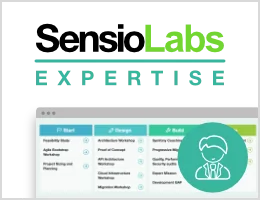Understanding how the Front Controller, Kernel and Environments Work together
The configuration environments section explained the basics on how Symfony uses environments to run your application with different configuration settings. This section will explain a bit more in-depth what happens when your application is bootstrapped. To hook into this process, you need to understand three parts that work together:
Note
Usually, you will not need to define your own front controller or
Kernel class as Symfony provides sensible default implementations.
This article is provided to explain what is going on behind the scenes.
The Front Controller
The front controller is a design pattern; it is a section of code that all requests served by an application run through.
In the Symfony Skeleton, this role is taken by the index.php file in the
public/ directory. This is the very first PHP script that is run when a
request is processed.
The main purpose of the front controller is to create an instance of the
Kernel (more on that in a second), make it handle the request and return
the resulting response to the browser.
Because every request is routed through it, the front controller can be used to perform global initialization prior to setting up the kernel or to decorate the kernel with additional features. Examples include:
- Configuring the autoloader or adding additional autoloading mechanisms;
- Adding HTTP level caching by wrapping the kernel with an instance of HttpCache;
- Enabling the Debug component.
You can choose the front controller that's used by adding it in the URL, like:
1
http://localhost/index.php/some/path/...As you can see, this URL contains the PHP script to be used as the front
controller. You can use that to switch to a custom made front controller
that is located in the public/ directory.
See also
You almost never want to show the front controller in the URL. This is achieved by configuring the web server, as shown in Configuring a Web Server.
Technically, the bin/console script used when running Symfony on the command
line is also a front controller, only that is not used for web, but for command
line requests.
The Kernel Class
The Kernel is the core of Symfony. It is responsible for setting up all the bundles used by your application and providing them with the application's configuration. It then creates the service container before serving requests in its handle() method.
The kernel used in Symfony applications extends from Kernel
and uses the MicroKernelTrait.
The Kernel class leaves some methods from KernelInterface
unimplemented and the MicroKernelTrait defines several abstract methods, so
you must implement them all:
- registerBundles()
- It must return an array of all bundles needed to run the application.
- configureRoutes()
- It adds individual routes or collections of routes to the application (for example loading the routes defined in some config file).
- configureContainer()
-
It loads the application configuration from config files or using the
loadFromExtension()method and can also register new container parameters and services.
To fill these (small) blanks, your application needs to extend the Kernel class
and use the MicroKernelTrait to implement these methods. Symfony provides by
default that kernel in the src/Kernel.php file.
This class uses the name of the environment - which is passed to the Kernel's
constructor
method and is available via getEnvironment() -
to decide which bundles to enable. The logic for that is in registerBundles().
You are free to create your own, alternative or additional Kernel variants.
All you need is to adapt your (or add a new) front controller to make use of the
new kernel.
Note
The name and location of the Kernel is not fixed. When putting
multiple kernels into a single application,
it might therefore make sense to add additional sub-directories, for example
src/admin/AdminKernel.php and src/api/ApiKernel.php. All that matters
is that your front controller is able to create an instance of the appropriate kernel.
Note
There's a lot more the Kernel can be used for, for example
overriding the default directory structure.
But odds are high that you don't need to change things like this on the
fly by having several Kernel implementations.
Debug Mode
The second argument to the Kernel constructor specifies if the application
should run in "debug mode". Regardless of the
configuration environment, a Symfony
application can be run with debug mode set to true or false.
This affects many things in the application, such as displaying stack traces on
error pages or if cache files are dynamically rebuilt on each request. Though
not a requirement, debug mode is generally set to true for the dev and
test environments and false for the prod environment.
Similar to configuring the environment you can also enable/disable the debug mode using the .env file:
1 2 3
# .env
# set it to 1 to enable the debug mode
APP_DEBUG=0This value can be overridden for commands by passing the APP_DEBUG value
before running them:
1 2 3 4 5
# Use the debug mode defined in the .env file
$ php bin/console command_name
# Ignore the .env file and enable the debug mode for this command
$ APP_DEBUG=1 php bin/console command_nameInternally, the value of the debug mode becomes the kernel.debug
parameter used inside the service container.
If you look inside the application configuration file, you'll see the
parameter used, for example, to turn Twig's debug mode on:
1 2 3
# config/packages/twig.yaml
twig:
debug: '%kernel.debug%'1 2 3 4 5 6 7 8 9 10 11 12
<?xml version="1.0" encoding="UTF-8" ?>
<container xmlns="http://symfony.com/schema/dic/services"
xmlns:xsi="http://www.w3.org/2001/XMLSchema-instance"
xmlns:twig="http://symfony.com/schema/dic/twig"
xsi:schemaLocation="http://symfony.com/schema/dic/services
https://symfony.com/schema/dic/services/services-1.0.xsd
http://symfony.com/schema/dic/twig
https://symfony.com/schema/dic/twig/twig-1.0.xsd">
<twig:config debug="%kernel.debug%"/>
</container>1 2 3 4 5 6 7
// config/packages/twig.php
use Symfony\Config\TwigConfig;
return static function (TwigConfig $twig): void {
// ...
$twig->debug('%kernel.debug%');
};The Environments
As mentioned above, the Kernel has to implement another method -
configureContainer().
This method is responsible for loading the application's configuration from the
right environment.
Configuration environments allow to execute
the same code using different configuration. Symfony provides three environments
by default called dev, prod and test.
More technically, these names are nothing more than strings passed from the
front controller to the Kernel's constructor. This name can then be used in
the configureContainer() method to decide which configuration files to load.
Symfony's default Kernel class implements this method by loading first the
config files found on config/packages/* and then, the files found on
config/packages/ENVIRONMENT_NAME/. You are free to implement this method
differently if you need a more sophisticated way of loading your configuration.
Environments and the Cache Directory
Symfony takes advantage of caching in many ways: the application configuration, routing configuration, Twig templates and more are cached to PHP objects stored in files on the filesystem.
By default, these cached files are largely stored in the var/cache/ directory.
However, each environment caches its own set of files:
1 2 3 4 5 6
your-project/
├─ var/
│ ├─ cache/
│ │ ├─ dev/ # cache directory for the *dev* environment
│ │ └─ prod/ # cache directory for the *prod* environment
│ ├─ ...Sometimes, when debugging, it may be helpful to inspect a cached file to
understand how something is working. When doing so, remember to look in
the directory of the environment you're using (most commonly dev/ while
developing and debugging). While it can vary, the var/cache/dev/ directory
includes the following:
App_KernelDevDebugContainer.php- The cached "service container" that represents the cached application configuration.
url_generating_routes.php- The cached routing configuration used when generating URLs.
url_matching_routes.php- The cached configuration used for route matching - look here to see the compiled regular expression logic used to match incoming URLs to different routes.
twig/- This directory contains all the cached Twig templates.
Note
You can change the cache directory location and name. For more information read the article How to Override Symfony's default Directory Structure.

